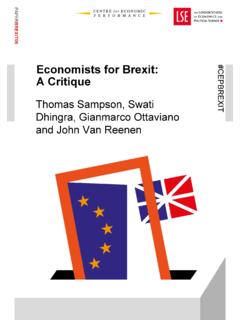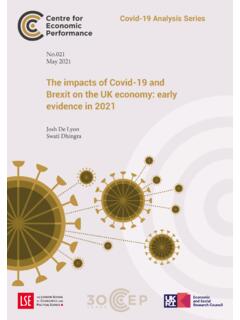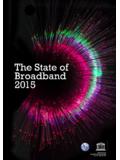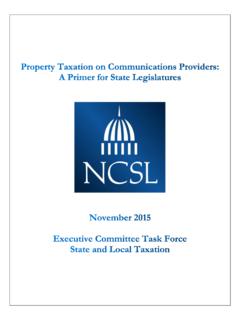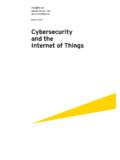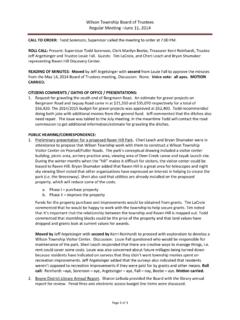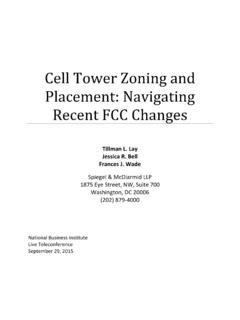Transcription of CEP Discussion Paper No 1350 May 2015 Ill …
1 ISSN 2042-2695 CEP Discussion Paper No 1350 May 2015 Ill communication : technology , distraction & Student performance Louis-Philippe Beland Richard Murphy Abstract This Paper investigates the impact of schools banning mobile phones on student test scores. By surveying schools in four English cities regarding their mobile phone policies and combining it with administrative data, we find that student performance in high stakes exams significantly increases post ban. We use a difference in differences (DID) strategy, exploiting variations in schools autonomous decisions to ban these devices, conditioning on a range of student characteristics and prior achievement.
2 Our results indicate that these increases in performance are driven by the lowest-achieving students . This suggests that restricting mobile phone use can be a low-cost policy to reduce educational inequalities. Keywords: Mobile phones, technology , student performance , productivity JEL codes: I21; I28; O33; J24 This Paper was produced as part of the Centre s Education and Skills Programme. The Centre for Economic performance is financed by the Economic and Social Research Council. We would like to thank Andriana Bellou, Vincent Boucher, Dave Card, David Karp, Briggs Depew, Christian Dustman, Ozkan Eren, Baris Kaymak, Stephen Machin, Naci Mocan, Ismael Yacoub Mourifie, Daniel Parent, Shqiponja Telhaj, Felix Weinhardt, and seminar participants at AEFP, APPAM, RES, IAWEE, University of Montreal and the University of Texas at Austin for comments and discussions.
3 We would also like to thank Guillaume Cote, Fan Duan and Vlad Khripunov for excellent research assistance. Any remaining errors are our own. Louis-Philippe Beland, Louisiana State University. Richard Murphy, University of Texas at Austin and Associate at Centre for Economic performance , London School of Economics. Published by Centre for Economic performance London School of Economics and Political Science Houghton Street London WC2A 2AE All rights reserved. No part of this publication may be reproduced, stored in a retrieval system or transmitted in any form or by any means without the prior permission in writing of the publisher nor be issued to the public or circulated in any form other than that in which it is published.
4 Requests for permission to reproduce any article or part of the Working Paper should be sent to the editor at the above address. L-P Beland and R. Murphy, submitted 2015 . 2 1. IntroductionTechnological advancements are commonly viewed as leading to increased productivity. Numerous studies document the benefits of technology on productivity in the workplace and on human capital There are, however, potential drawbacks to new technologies, as they may provide distractions and reduce productivity. Mobile phones can be a source of great disruption in workplaces and classrooms, as they provide individuals with access to texting, games, social media and the Internet.
5 Given these features, mobile phones have the potential to reduce the attention students pay to classes and can therefore be detrimental to learning. There are debates in many countries as to how schools should address the issue of mobile phones. Some advocate for a complete ban while others promote the use of mobile phones as a teaching tool in classrooms. This debate has most recently been seen with the Mayor of New York removing a ten year ban of phones on school premises in March 2015 , stating that abolition has the potential to reduce inequality (Sandoval et al, 2015 ).2 Despite the extensive use of mobile phones by students and the heated debate over how to treat them, the impact of mobile phones on high school student performance has not yet been academically studied.
6 In this Paper , we estimate the effect of schools banning mobile phones on student test scores. The lack of consensus regarding the impact of mobile phones means that there is no UK government policy about their use in schools. This has resulted in schools having complete autonomy of their mobile phone policy, and have differed in their approaches. We exploit these differences through a difference in differences (DID) estimation strategy. We compare the gains in test scores across and within schools before and after mobile phone bans are introduced. In order to do this, we generated a unique dataset on the history of mobile phone and other school policies from a survey of high schools in four English cities (Birmingham, London, Leicester and Manchester), carried out in spring of 2013.
7 This is combined with administrative data on the complete student population from the National Pupil Database (NPD). From this, we know the academic performance of all students since 2001, and so use differences in implementation dates of mobile phone bans to measure their impact on student performance . 1 : Kruger, 1993; Chakraborty and Kazarosian, 1999; Aral et al., 2007; Ding et al., 2009; and Malamud and Pop-Eleches, 2011. 2 Other examples of the debate are: Telegraph 2012; Childs, 2013; Barkham and Moss, 2012; Drury, 2012; O Toole, 2011; Johnson, 2012; and Carroll, 2013. 3 Moreover, the NPD tracks students over time, which allows us to account for prior test scores along with a set of pupil characteristics including gender, race, ever eligible for free school meals (FSM), and special educational needs (SEN) status.
8 Although we do not know which individuals owned mobile phones, it is reported that over 90% of teenagers owned a mobile phone during this period in England; therefore, any ban is likely to affect the vast majority of students (Ofcom 2006, 2011).3 Even if a student does not own a phone themselves their presence in the classroom may cause distraction . We find that following a ban on phone use, student test scores improve by of a standard deviation. Our results indicate that there are no significant gains in student performance if a ban is not widely complied with. Furthermore, this effect is driven by the most disadvantaged and underachieving pupils.
9 students in the lowest quartile of prior achievement gain of a standard deviation, whilst, students in the top quartile are neither positively nor negatively affected by a phone ban. The results suggest that low-achieving students are more likely to be distracted by the presence of mobile phones, while high achievers can focus in the classroom regardless of the mobile phone policy. This also implies that any negative externalities from phone use do not impact on the high achieving students . Schools could significantly reduce the education achievement gap by prohibiting mobile phone use in schools, and so by allowing phones in schools, New York may unintentionally increase the inequalities of outcomes.
10 We include several robustness checks such as an event study, placebo bans, test for changes in student intake and range of alternative outcome measures. The rest of the Paper is organized as follows: Section 2 discusses the related literature; Section 3 provides a description of the data, survey and descriptive statistics; Section 4 presents the empirical strategy; Section 5 is devoted to the main results and heterogeneity of the impacts; Section 6 provides a series of robustness checks; and Section 7 concludes with policy implications. 2. Related literatureThere is a growing literature on the impact of technology on student outcomes, which has yet to reach a consensus.


